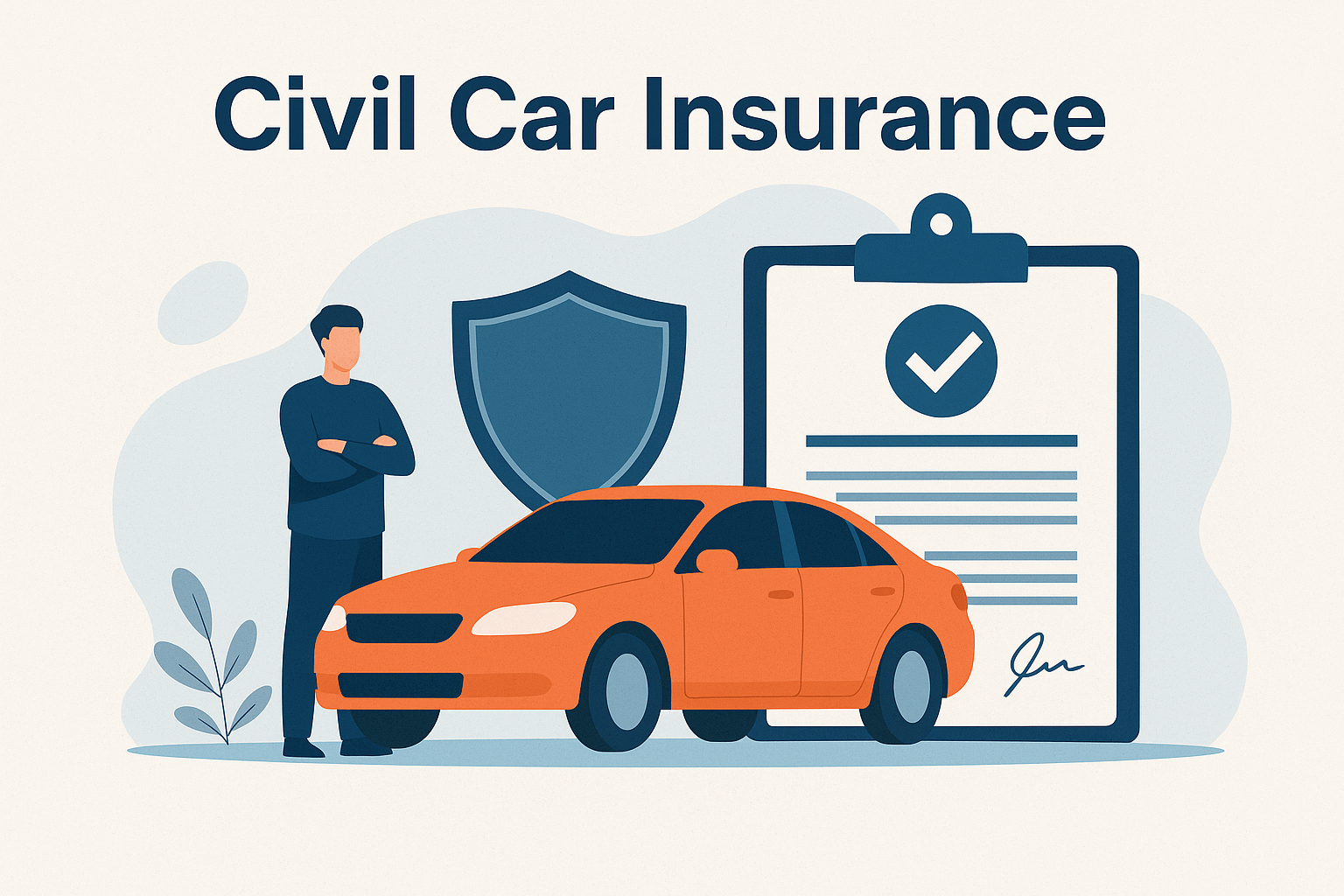If you’ve come across the term civil car coverage, you’re not alone in wondering what it really means — and how it applies to drivers in the United States. While the phrase may sound unfamiliar to some, it essentially refers to civil liability auto insurance, which is better known in the U.S. as liability coverage.
This type of insurance protects drivers from the legal and financial consequences of accidents where they are found at fault. Whether you’re just learning the ropes of auto insurance or reviewing your policy in 2025, understanding civil car coverage is crucial.
What Is Civil Car Coverage?
Civil car coverage refers to the part of your auto insurance that covers your responsibility to others — including bodily injuries and property damage — when you’re legally at fault for an accident.
It is called “civil” because it relates to civil law, where private parties (like drivers) may be held liable for injuries, damage, or losses caused to others — as opposed to criminal law, which deals with public offenses.
In the U.S., this is known simply as liability car insurance, and it’s required by law in nearly every state.
The Two Main Parts of Civil Car Coverage
Civil liability insurance typically includes two essential components:
1. Bodily Injury Liability (BI)
This covers:
- Medical expenses of others you injure in an accident
- Legal fees if you’re sued
- Pain and suffering claims
- Lost wages or long-term disability expenses
Important: This does not cover your own medical expenses.
2. Property Damage Liability (PD)
This pays for:
- Damage to another person’s car
- Damage to public property (e.g., fences, buildings, lamp posts)
- Legal fees if the property owner sues
Example Scenario
Let’s say you accidentally run a stop sign and hit another vehicle. The driver is injured, and their car needs extensive repairs.
Your civil car coverage (liability insurance) would:
- Pay for the driver’s medical bills (Bodily Injury)
- Pay for repairs to their car (Property Damage)
- Protect you from being personally sued for tens of thousands of dollars
State Minimum Coverage Limits in 2025
Every state has minimum required limits for civil (liability) auto insurance. Here’s a snapshot of 2025 minimums in a few key states:
| State | BI per Person | BI per Accident | Property Damage |
|---|---|---|---|
| California | $15,000 | $30,000 | $5,000 |
| Texas | $30,000 | $60,000 | $25,000 |
| Florida | $10,000 | $20,000 | $10,000 |
| New York | $25,000 | $50,000 | $10,000 |
| Illinois | $25,000 | $50,000 | $20,000 |
💡 Tip: These are legal minimums — not recommended limits. Medical and repair costs can easily exceed these amounts in 2025.
Why Civil Car Coverage Is Essential in 2025
Still wondering why this coverage is so important?
Here are five reasons civil car coverage is a non-negotiable:
- It’s Legally Required
Driving without liability insurance is illegal in almost every state, leading to fines, license suspension, or even jail time. - It Protects You from Lawsuits
Even a minor accident can lead to legal claims. Civil coverage pays for legal defense and settlements. - It Shields Your Personal Assets
If you’re sued and your insurance doesn’t cover all the damages, you could be personally liable. - It’s Affordable
Liability-only policies are generally the cheapest form of auto insurance. - It Covers a Wide Range of Situations
From rear-end collisions to parking lot scrapes, civil coverage steps in when you’re at fault.
Civil Car Coverage vs. Full Coverage: What’s the Difference?
Let’s break down how civil car coverage compares to “full coverage” insurance.
| Feature | Civil Coverage (Liability) | Full Coverage |
|---|---|---|
| Covers your liability to others | ✅ Yes | ✅ Yes |
| Covers damage to your own vehicle | ❌ No | ✅ Yes (via collision coverage) |
| Covers non-accident events | ❌ No | ✅ Yes (via comprehensive coverage) |
| Required by lenders or lessors | ❌ No | ✅ Often |
| Monthly Premium | 💵 Lower | 💵💵 Higher |
If you drive an older car that you could afford to replace, civil coverage alone may be sufficient. But for newer or financed vehicles, full coverage is often a smarter choice.
How Much Civil Liability Insurance Should You Carry?
Choosing the right amount of liability insurance is crucial. Experts often recommend more than the legal minimums. Here’s a commonly suggested setup:
- Bodily Injury: $100,000 per person / $300,000 per accident
- Property Damage: $100,000
This is referred to as 100/300/100 coverage — a much safer cushion than basic state minimums.
🛡️ If your policy only covers $25,000 in property damage and you cause $50,000 worth of damage, you’ll be personally liable for the $25,000 difference.
Who Should Choose Civil Car Coverage?
Civil-only (liability-only) coverage may be suitable if:
- You own an older vehicle (low market value)
- You don’t owe a loan or lease on your car
- You want the cheapest legal coverage
- You’re a safe, low-mileage driver
You should consider full coverage if:
- You drive a newer or leased car
- You live in a high-risk area (urban traffic, theft, floods)
- You can’t afford to pay for car repairs out-of-pocket
How to Get the Best Civil Car Coverage in 2025
Want to save money while staying protected? Follow these tips:
- Compare Rates Across Insurers
Use comparison tools like PolicyGenius or The Zebra to view multiple quotes side-by-side. - Check for Discounts
Ask your insurer about savings for bundling, good driving records, student status, or usage-based programs. - Choose a Higher Deductible
Opting for a higher deductible can significantly lower your premium. - Review Your Policy Annually
As your vehicle ages or your driving habits change, reassess your coverage needs and shop for better rates. - Work with a Licensed Agent
An independent insurance agent can help tailor coverage to your budget and liability risk profile.
Internal & External References
- Best Cheap Car Insurance for College Students in the US – 2025 Guide
- 10 Factors That Affect Your Car Insurance Rates in 2025
- What Is Liability Car Insurance? – NerdWallet
- Auto Liability Coverage – Investopedia
Frequently Asked Questions (FAQ)
Here are answers to the most common questions about civil car coverage to help you understand this important insurance better
Final Thoughts
Civil car coverage or liability insurance is more than just a legal checkbox. It’s your first line of financial defense if you’re ever involved in an accident. In 2025, as medical and repair costs continue to rise, underinsuring yourself could be a costly mistake.
Make sure your policy not only meets state minimums but also covers your true financial exposure. Consider speaking with a licensed agent and reviewing your coverage annually to stay protected without overpaying.
If you’re looking for affordable, reliable car insurance that includes robust civil liability protection, start comparing quotes today and drive with confidence.

